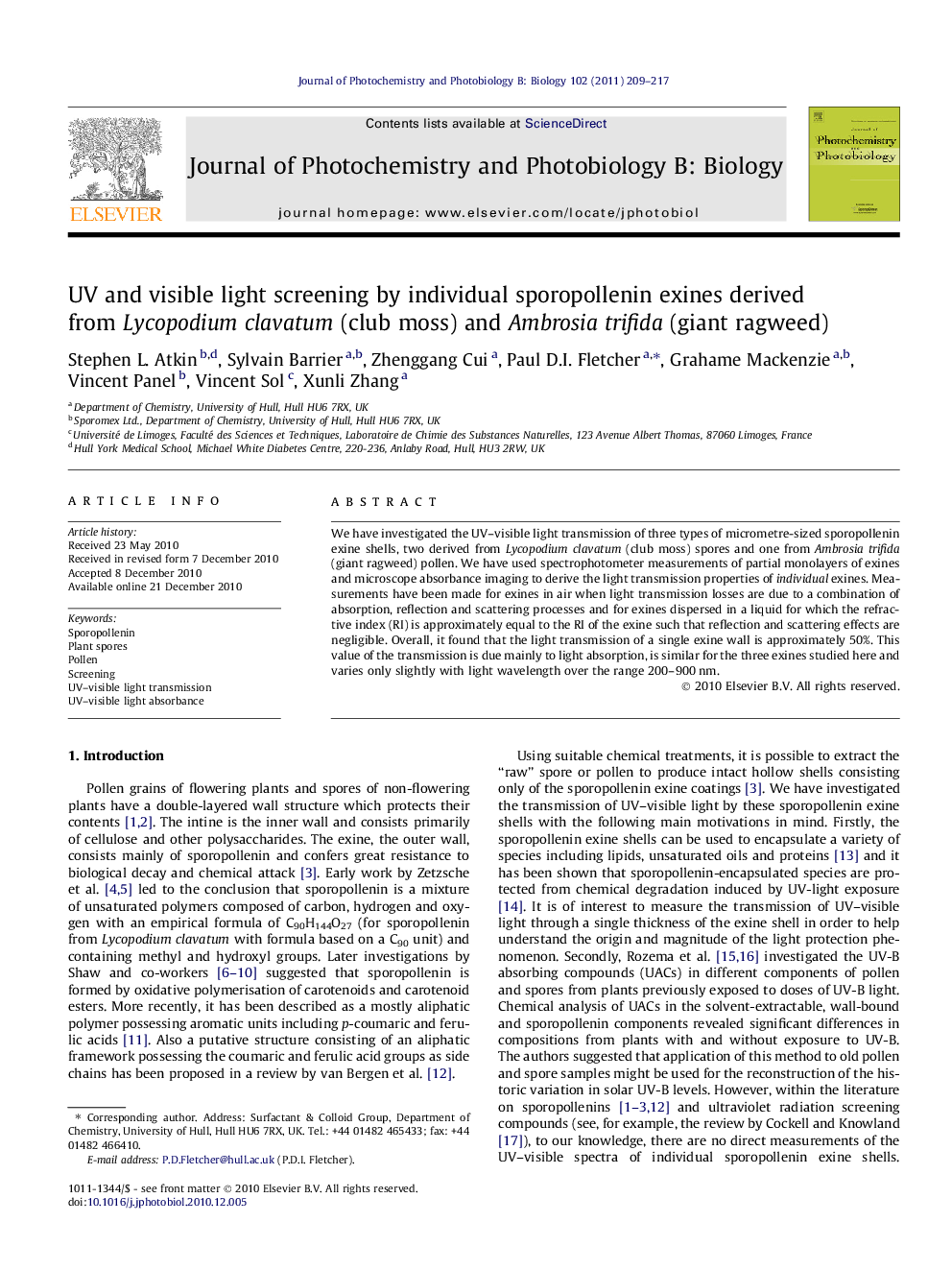| Article ID | Journal | Published Year | Pages | File Type |
|---|---|---|---|---|
| 30890 | Journal of Photochemistry and Photobiology B: Biology | 2011 | 9 Pages |
We have investigated the UV–visible light transmission of three types of micrometre-sized sporopollenin exine shells, two derived from Lycopodium clavatum (club moss) spores and one from Ambrosia trifida (giant ragweed) pollen. We have used spectrophotometer measurements of partial monolayers of exines and microscope absorbance imaging to derive the light transmission properties of individual exines. Measurements have been made for exines in air when light transmission losses are due to a combination of absorption, reflection and scattering processes and for exines dispersed in a liquid for which the refractive index (RI) is approximately equal to the RI of the exine such that reflection and scattering effects are negligible. Overall, it found that the light transmission of a single exine wall is approximately 50%. This value of the transmission is due mainly to light absorption, is similar for the three exines studied here and varies only slightly with light wavelength over the range 200–900 nm.
